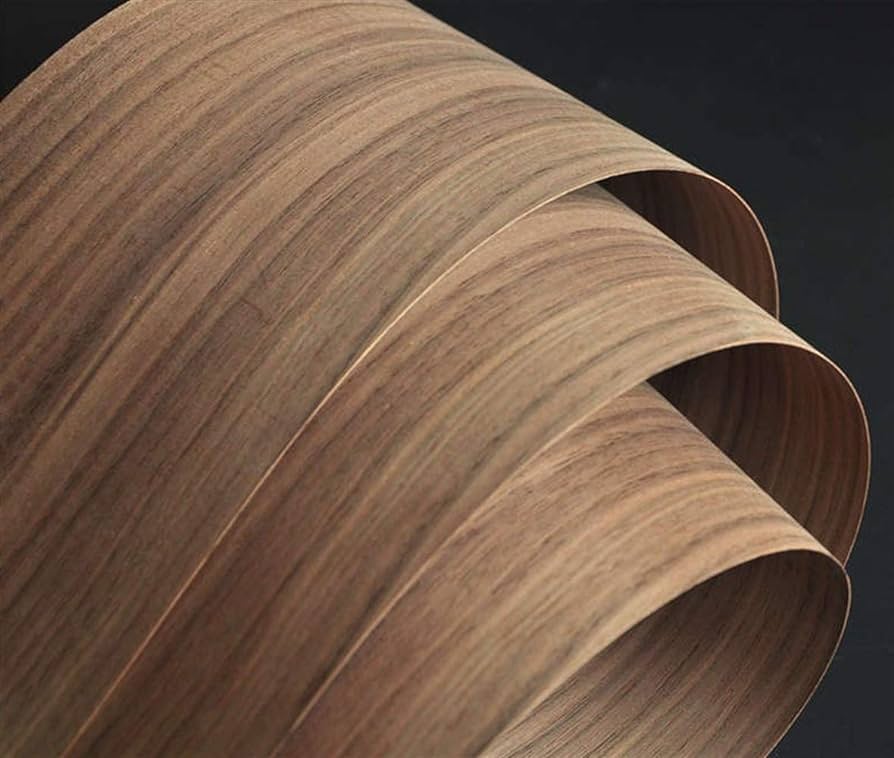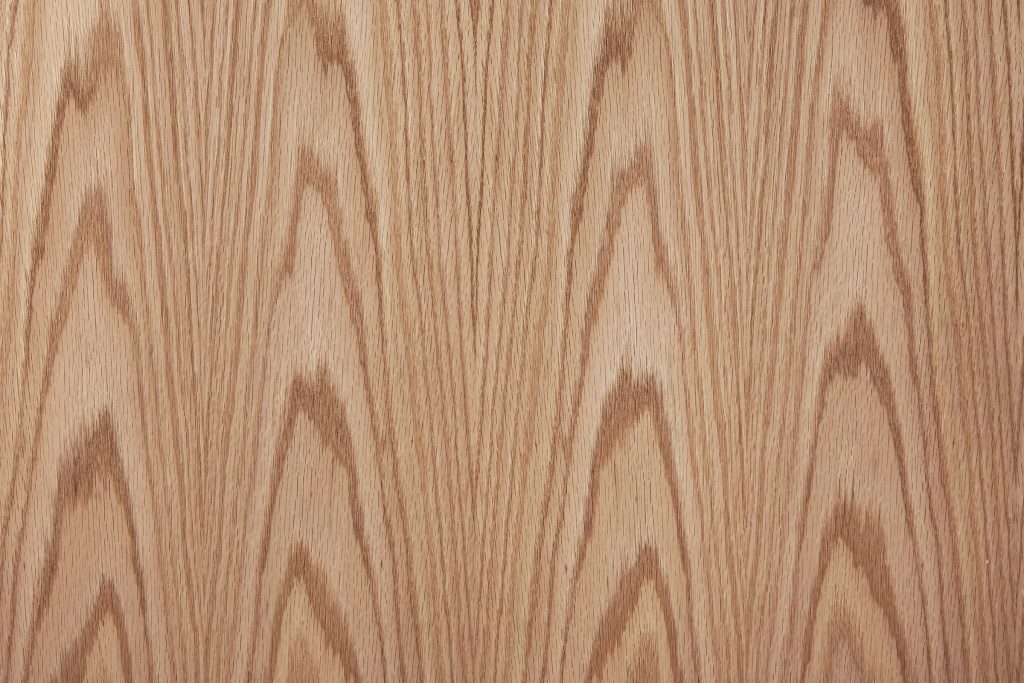Quarter Cut vs Crown Cut Veneers: What's The Difference?
Difference Between Quarter Cut vs Crown Cut Veneers
The process of making timber veneers provides a range of different design capabilities, depending on how you peel or slice your timber materials. For instance, lumber mills can produce quality timber veneers from tree burls or even cut through annual growth rings at the base of trunks to produce butt veneers.
Of all the timber veneer cuts and grain patterns available on the market today, however A comparison of quarter cut vs crown cut veneers is amongst the most popular. The typically uniform grain patterns produced by both of these veneer cuts make them a preferred cut style for veneers used in furniture production, cabinetry and interior walling.
But what is the difference between quarter cut and crown cut veneers, and why would you choose one over the other? We’ll be answering those questions today in our definitive breakdown of the two veneer cut styles and their different attributes and applications. Read on to settle the debate of quarter cut vs crown cut veneers once and for all.
Article Contents between quarter cut vs crown cut veneers:
NEED WOOD PANELS?
No stress, we're here to help. Fill out the form below for a free quote and consultation with our experts.
What are Quarter Cut Veneers?
As its name suggests, a quarter cut veneer is produced by first cutting a log into quarters first to create four separate flitches. Each flitch is then cut at a right angle to its growth rings. Cutting the wood at a right angle to its growth rings effectively creates a uniform vertical grain pattern that looks more like vertical stripes rather than tree rings.
Here are the pros, cons and typical applications for Quarter Cut Veneers:

Pros of Quarter Cut Veneers
One of the biggest advantages of using quarter cut veneers is that they’re incredibly easy to match. If you’re not familiar with “matching”, it’s the technique used to ensure that installed veneers are at least uniform or complementary in their layout. Veneers can generally be matched using three different matching methods:
- Book matching – consecutive veneers being installed as ‘mirror images’ to one another,
- Slip matching – consecutive veneers are installed side-by-side to produce a repeating horizontal grain pattern across all panels, or
- Random matching – veneers are matched ‘randomly’, or with no discernible pattern, which ultimately produces a more natural look, or provides the illusion that walls are made from solid timber rather than timber veneers.
For customers who are looking to maintain a uniform design that emphasises verticality in their furniture or construction project, matching quarter cut veneers are most likely to provide the finished results you’re looking for.
Cons of Quarter Cut Veneers
Just because quarter cut veneers are cut at a right angle to the wood grain, it doesn’t necessarily mean that the grain pattern will be straight. In fact, there is every chance that your quarter cut veneers will boast a slight curve or rounding in its grain pattern, depending on the curvature of the original pattern before the timber logs were sliced into quarters.
Quarter cutting timber also produces more narrow veneer flitches in comparison to other cutting styles. As a result of this and the fact that all veneers have to be sliced perpendicularly or at right angles to the wood grain, quarter cut veneers are more likely to be produced in smaller batches to maintain the same level of quality and uniformity as other cutting processes. This limited production capacity also makes quarter cut veneers on average more costly than other veneer cut styles.
Typical Applications for Quarter Cut Veneers
Because of their uniform grain style, quarter cut veneers are most likely to be used for outward facing applications rather than for structural applications. This means that you’ll be likely to see quarter cut veneers being used for furniture production and in the installation of timber walling. Quarter cut veneers are also ideal for producing kitchen cabinetry, wardrobes, and doors.
What are Crown Cut Veneers?
Like quarter cut veneers, crown cut veneers are produced by first cutting a treated timber log before it’s sliced or peeled – but instead of cutting the log into quarters, you cut it into halves straight across the centre of the log. This creates two flitches that are basically mirror images of one another (minor quirks or timber flaws aside).
From here, the half-cut logs are then sliced right through the centre of the log again and at a tangent to its growth rings. The final result is a grain pattern that generally consists of two vertical lines that meet at a peak. This shape is referred to as a cathedral or crown style, which is where the name ‘crown cut veneers’ comes from.
Here are the pros, cons and typical applications for Crown Cut Veneers:

Pros of Crown Cut Veneers
Crown cut veneers are considered to be visually dynamic, with plenty of detail in the wood grain. This makes them ideal for use anywhere where the wood grain will be on display – think cabinetry, internal walling and ceiling panels.
As crown cut veneers are sliced straight through halved wood logs, they can be produced in larger batches than quarter cut veneers or rift cut veneers. This means that you can often purchase a larger amount of crown cut veneers for less than quarter cut veneers.
Crown cut veneers are also perfect for book matching, as veneers produced from complementary log halves can easily be installed to ‘mirror’ one another in a bookend style.
Cons of Crown Cut Veneers
If you’re after a uniform grain pattern across all your timber veneers, then you likely won’t get the level of symmetry you’re after from crown cut veneers. As crown cut veneers are produced by slicing all the way through log halves, veneer manufacturers are less likely to reposition the peeling lathe or wood slicer for the sake of producing uniform grain patterns. It’s all about efficiency rather than form.
Typical Applications for Crown Cut Veneers
Although the wood grain pattern is more pronounced in crown cut veneers, it’s still very aesthetically pleasing, which is why crown cut veneers are commonly used for furniture production. The crown-style or cathedral-style grain pattern also works well in interior applications, as the grain pattern compliments the shape and structure of any interior space. Crown grain patterns also provide plenty of contrast with vertical lines, which makes these veneers a great option for wall panelling interior spaces.
Quarter Cut vs Crown Cut Veneers: What’s the Right Style for You?
At the end of the day, however, the quality of your timber veneer panels isn’t dictated by how uniform their grain pattern is, but by the way the panels are pressed. If you’re familiar with how timber veneers are made or more importantly, how plywood is made, then you know that the pressing process (both the cold press that utilises hydraulic pressure as well as the hot press for thermosetting resin) is vital to the quality of your finished plywood products. So regardless of whether you acquire quarter cut or crown cut veneers, so long as those veneers have been sourced from a reputable manufacturer and supplier, you’ll know you’ll be receiving a quality product.
Thankfully, our range of timber veneers and other wood panel products have been curated in partnership with some of Australia’s most reputable timber mills and manufacturers. Our production partners are also committed to maintaining sustainable timber practices just like us. You can be rest assured that every single one of our products available at Cabinet Timbers has been produced in accordance with EWPAA product certification requirements alongside all materials also being sourced from sustainably managed forests.
Explore the comparative difference between Quarter Cut vs Crown Cut Veneers, and our range of timber veneers here at Cabinet Timbers today. Furthermore, we offer high quality wood cut to size services. Just contact our team at Cabinet Timbers via our online enquiry form or by calling (03) 8353 2222 today.
Want to read more about comparing different materials? Then, have a look at our comparative blogs to make an informed decision:

